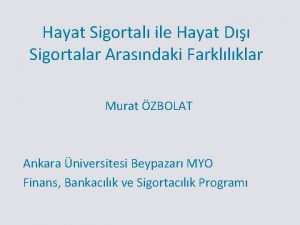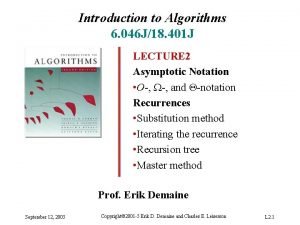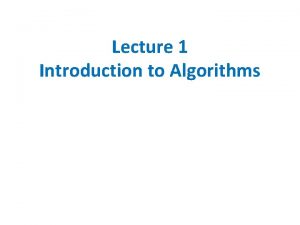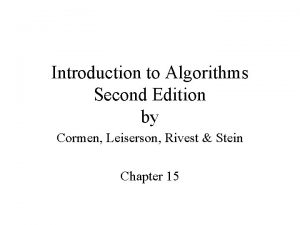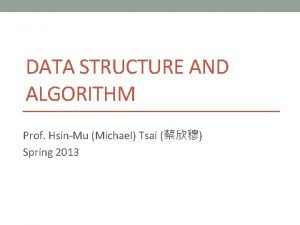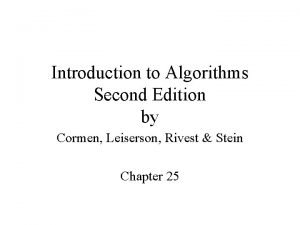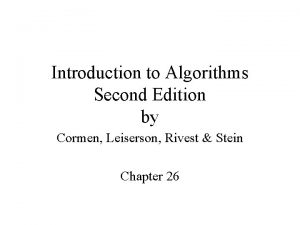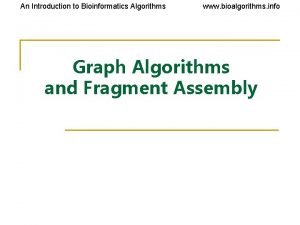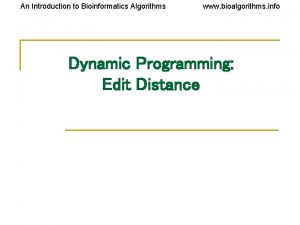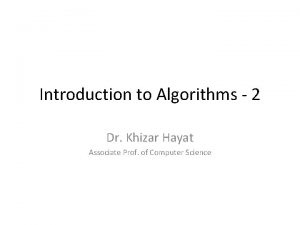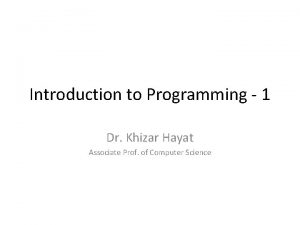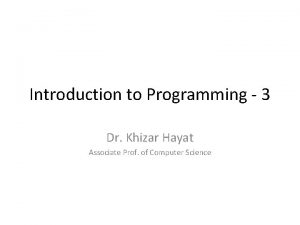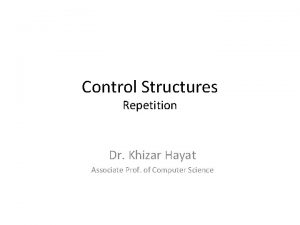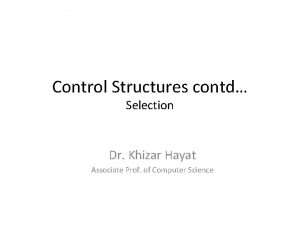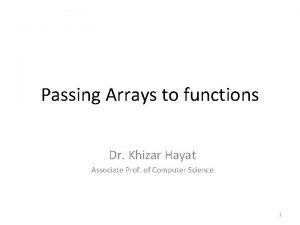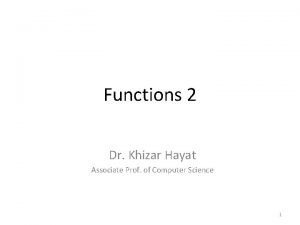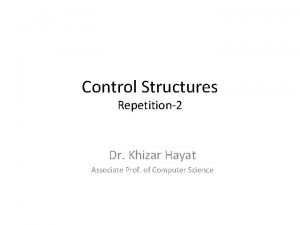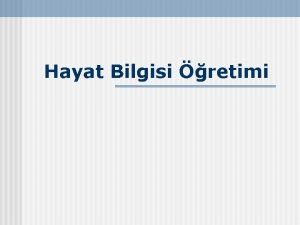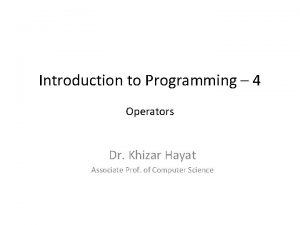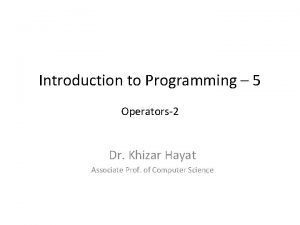Introduction to Algorithms 1 Dr Khizar Hayat Associate














- Slides: 14

Introduction to Algorithms - 1 Dr. Khizar Hayat Associate Prof. of Computer Science

Algorithm • A sequence of unambiguous instructions to solve a problem • A well-defined procedure that takes some value(s), process it and produce some value(s), as output • Hence algorithm has three parts: – Input – Processing or transformation – output

Properties of an algorithm • Finiteness – Terminates in finite number of steps • Definiteness – Each step must be clearly and carefully specified • Input – Valid inputs clearly specified • Output – Can be proved to produce the correct output given a valid input • Effectiveness – Steps must be simple and atomic

Variable • A named location that stores a value • A place holder for a data • The data may change from time to time during execution: only the last change is reflected in a given variable • Named by the programmer • Assigning value to a variable means putting/storing some value in the location corresponding to the variable – A 5 or A: =5 • A=5 in C++ and JAVA

Operators Arithmatic Operators Operation Operator Add + Subtract - Multiply * Divide / ‘Modulo divide’ or mod % Logical Operators Operation Operator AND && OR || NOT !

Operators Relational Operators Operation Operator (C++) Equal to = == Greater than > > Less than < < Greater than or equal ≥ >= Less than or equal ≤ <= Not equal to ≠ !=

Key features of an Algorithm • Sequence/order/process • Decision/Selection • Repetition/Iteration/looping

Methods of specifying an algorithm 1. Flowchart 2. Pseudocode

Flowchart • A graphical way to express an algorithm – “A picture is worth a thousand words” • Symbols (ANSI) 2 - Process 1 - Terminal 3 - Input/output Start Stop 4 - Decision 5 - Connector count = 5? Yes No 6 - Predefined Process

Pseudocode • Pseudo means fake or mock or dummy ﺯﺍﺋﻒ • It is not proper C++ or Java code but a mock code understandable to any programmer • Language independence: – Must not use constructs/keywords from C++/Java or any other programming language • Allows the designer to focus on logic rather than language syntax • Use proper indentation • Always end your constructs! – Must Begin and END code/loops/ if

Algorithm to add two numbers 1. begin 2. get num 1 3. get num 2 4. set sum num 1 + num 2 5. display sum 6. end Start Read Num 1 Read Num 2 Sequence Sum Num 1 + Num 2 Display Sum Stop

Algorithm to input two numbers and print the smaller number Start 1. begin 2. get num 1 3. get num 2 4. if num 1 < num 2 5. then display num 1 as smaller 6. else display num 2 as smaller 7. end if 8. end Selection Read Num 1 Read Num 2 Num 1 < Num 2? No Yes Display Num 1 as min Stop Display Num 2 as min

Algorithm to sum five numbers input by the user 1. begin 2. set count 0 3. set sum 0 4. repeat until count=5 5. get num 6. set count+1 7. set sum+num 8. end repeat 9. display sum as the total 10. end Repetition Start count 0 sum 0 Read Num count + 1 sum + Num count = 5? Yes Display sum as total Stop No

Algorithm to compute the GCD of two numbers Start Read Num. A Read Num. B Num. A > Num. B? No Yes Maqs Num. A Maqs Num. B M_Alaih Num. A Baqi Maqs mod M_Alaih Baqi = 0? No Yes Display M_Alaih as GCD Stop Maqs M_Alaih Maqs mod M_Alaih
 Hayat ve hayat dışı sigortalar arasındaki farklar
Hayat ve hayat dışı sigortalar arasındaki farklar An introduction to the analysis of algorithms
An introduction to the analysis of algorithms Bioinformatics
Bioinformatics Design and analysis of algorithms introduction
Design and analysis of algorithms introduction Introduction to algorithms
Introduction to algorithms Introduction to algorithms slides
Introduction to algorithms slides Introduction to algorithms 2nd ed
Introduction to algorithms 2nd ed Introduction to algorithms
Introduction to algorithms Introduction to algorithms lecture notes
Introduction to algorithms lecture notes Introduction to the design and analysis of algorithms
Introduction to the design and analysis of algorithms Introduction to sorting algorithms
Introduction to sorting algorithms Introduction to algorithms 2nd edition
Introduction to algorithms 2nd edition Introduction to algorithms 2nd edition
Introduction to algorithms 2nd edition Introduction to bioinformatics algorithms
Introduction to bioinformatics algorithms Bioalgorithms
Bioalgorithms
